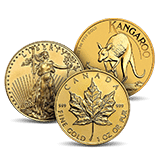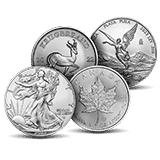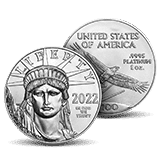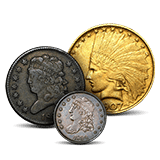
The nummus (Plural: nummi) has a rich and varied history that spans several centuries and different cultures. It reflects the ancient world’s economic, political, and technological shifts and holds historic numismatic significance today.
Nummus Origins and Etymology
The word nummus is derived from the Doric Greek word noummos, which itself comes from the Classical Greek nómos, for “law” or “custom.” It initially referred to a specific type of coin used in Greek-speaking Southern Italy. Over time, the term grew to encompass various coins across different regions and historical periods.
Evolution of the Nummus
Roman Usage
Nummus was used as a general term for Roman Republic coins and was particularly synonymous with the sestertius, a large bronze coin crucial to the Roman economy. The Roman sestertius played a vital role in trade, taxation, and daily life, forming the economic backbone of Roman society.
Late Antiquity
During the Tetrarchy (294 AD), nummus formally came to refer to the follis, a large bronze coin weighing 10 grams and 30 mm in diameter. The follis played a significant role in Diocletian’s monetary reforms, which aimed to stabilize the faltering Roman economy. Constantine I reduced the size and weight of the silver plated follis around 307 AD, marking a shift to billon.
The new issue featured a diademed portrait of Constantine, marking a significant shift in imperial imagery. The nummus underwent reduction and debasement over the fourth and fifth centuries, eventually losing even its silver plating. This deterioration mirrored the broader economic challenges facing the late empire.
Byzantine Period
As a Byzantine coin, the nummus weighed less than one gram and demonstrated poor strikes. They represented the lowest denomination of Byzantine coinage and were valued at fractions of the gold solidus.
During the rule of Justinian I, adjustments were made to nummus coinage. Justinian I introduced a 30-nummi coin and raised the weight of the 40-nummi follis to 25 grams in 538-539 AD.
Types of Nummus
| Type | Denomination | Key Features |
| Follis | 40 nummi | Large bronze coin, emperor’s profile |
| Semifollis | 20 nummi | Greek numeral “K”, smaller transactions |
| Decanummium | 10 nummi | Greek numeral “I”, everyday exchanges |
| Pentanummium | 5 nummi | Greek numeral “E”, small denominations |
| Nummus Minimus | <1 nummi | Tiny, poorly struck, minor transactions |
Composition Changes Over Time
| Period | Composition | Weight | Notable Changes |
| Early Roman | Bronze | 10 grams | Detailed imperial portraits |
| Constantine I | Silver-plated bronze | Reduced size | Introduction of diademed portrait |
| Late Roman | Billon (debased silver) | 3 grams | Continuous reduction and debasement |
| Byzantine | Copper alloys | 1 gram | Poorly struck, smallest denominations |
Changes in design and material reflected economic realities, technological advancements, and political messaging strategies, showcasing how coinage evolved to meet societal needs.
Regional Variations and Economic Impact
Regional Mints
Nummi were minted at diverse locations such as Antioch, Constantinople, and Carthage. Each mint imparted unique stylistic traits, influenced by local artistry and economic conditions. For example, Carthaginian issues featured reverse types like FELIX ADVENT AVC, GN with the mint mark PKP-T. These regional differences affected local circulation and trade preferences, making certain mints more influential in specific regions.
Debasement Trends
Over time, the nummus experienced significant debasement. While they initially weighed 10 grams, later examples shrank to under 3 grams, before the Byzantine one gram nummus emerged. Such degradation contributed to inflation, reduced purchasing power, and diminished public trust in the currency. This erosion of confidence led to hoarding behaviors and disruptions in trade, necessitating further monetary reforms.
Archaeological Significance
Archaeological finds, such as the Wold Newton Hoard discovered in East Yorkshire, provide valuable insights. This hoard contained 1,857 Roman copper nummi, including examples from Constantine’s reign. These discoveries shed light on ancient societies’ circulation patterns, economic conditions, and regional monetary practices. The nummus reflects broad societal transformations, from its Greek origins to its vital role in Roman and Byzantine economies.




